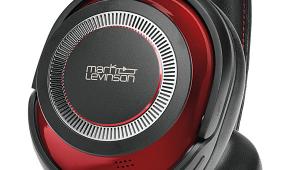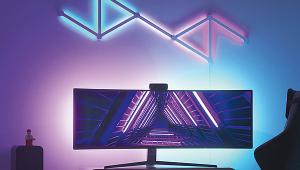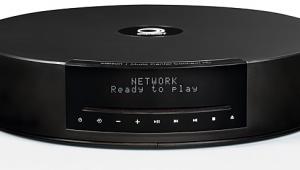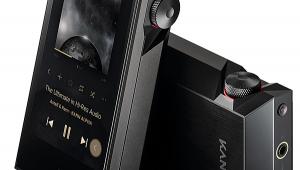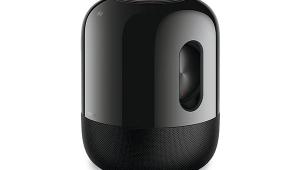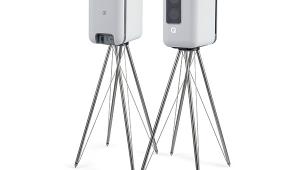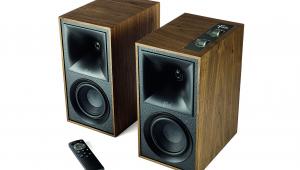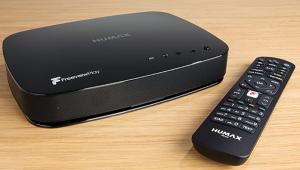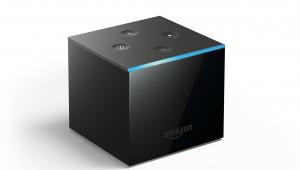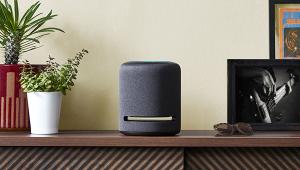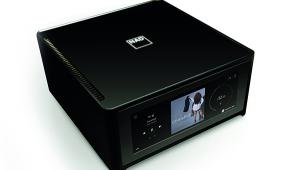Apple TV 4K [2021] media player review
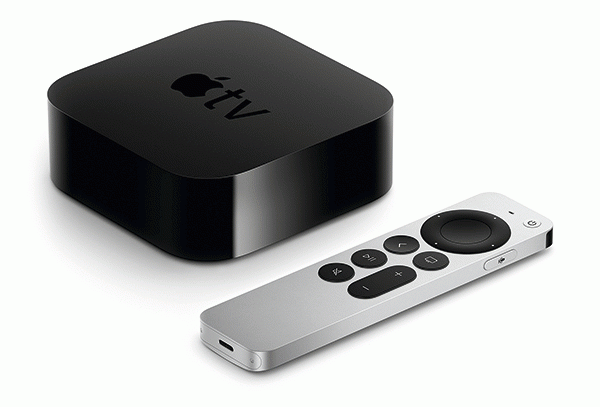
Having taken four years to come up with a sequel to its 4K streaming box, the hope has to be that Apple has delivered a really substantial upgrade. So let’s get right into picking out where the differences lie.
The most instantly obvious – and welcome – improvement is the Siri remote control. The little track pad at the top of the 2017 Apple TV’s ultra-thin handset was cool, but so fiddly that it probably led to a whole new generation of swear words. So it’s good to see the simple but effective design of the main Apple TV box remaining unchanged, but now partnered by a new handset that replaces the old track pad with a ‘click pad’ set around a large circular select button.
Seriously: this is so much easier to use that I instantly couldn’t believe I’d put up with the old design for so long without hurling it against a wall.
Note that it’s not something you can only get by buying the new box. Apple is also selling this revamped Siri remote as a standalone upgrade for the first-gen Apple TV 4K and earlier Apple TV HDs. The price is a not inexpensive £55, but you might think it's worth it if you are someone who struggled with the old one.
On to the hardware. The new Apple TV introduces an HDMI 2.1 output, sports a new automatic TV colour calibration system, and shifts from the A10X processor in the previous model to an A12 Bionic processor this time round. This new chip introduces support for ‘high frame rates’, including Dolby Vision HDR at 60Hz.
As usual, there are two versions available, one with 32GB storage, the other with 64GB. Considering the fairly meagre price difference between the two (they're £160 and £190 respectively), it's quite easy to recommend going for the roomier model.
Not an Xbox killer
When it comes to the Apple TV OS, the impact of moving to the A12 chip currently feels minimal. It does, however, increase the smoothness of some games in the Apple Arcade, and opens up the potential for a new generation
of more sophisticated and graphically intense titles. Not that I see any real evidence that the Apple TV will become a rival for serious game consoles.
The TV OS interface itself remains a fun place to hang out – colourful, intuitive and responsive.
The colour calibration system is more interesting – at least on paper. All you have to do is fire up the Apple TV app on your iPhone (iPhone X or newer), pair it with your Apple TV box, hold the phone’s front camera close to your TV screen, and run the Color Balance option contained in the app’s Calibration section.
The Apple TV hardware then pumps out a series of calibration test colours, followed by a split-screen beach sequence showing the before and after calibration results. Helpfully you can still at this point decide if you want to go with the calibrated image, or stick with the original.
As you’ve probably guessed, this calibration system changes the output settings in the Apple TV rather than any settings in your TV; it’s not a typical TV calibration where you can expect the results to apply to other sources.
Personally I’m not convinced that the calibration system is all that helpful. Running it on a range of TVs typically ended up with something pretty close to the Movie or Filmmaker presets those sets already carried, and in some cases the TV presets actually turned out to be more accurate than the Apple TV calibration.
But if you still like the sound of the auto-calibration feature, Apple is rolling it out to older Apple TVs via firmware update. So it’s not a reason in itself to get the new Apple device if you own an earlier one.
Content to wait
The most compelling reason to buy a new Apple TV
– beyond the new remote – is arguably its A12 chip-inspired support for 4K HDR video playback at frame rates up to 60fps. Admittedly, at the moment this is of limited use, given that there's precious little 60fps content available. However, Apple has announced that it’s working with the likes of Fox Sports, NBC Universal, Paramount+,
Red Bull TV and Canal+ on developing 60fps HDR programming. It may well start making some of its
own Apple TV+ shows and films in HFR, too.
While high frame rate movies are few and far between right now, it’s also tempting to think the likes of Ang Lee’s Gemini Man and James Cameron’s upcoming Avatar sequels might appear in Apple’s film library in 60fps. Maybe even in 4K Dolby Vision.
The most immediate use for the box's support for 4K Dolby Vision at 60fps, however, will be playback of such footage shot on iPhone 12 Pros. If you have one of these handsets, get snapping.
In yet more frame rate news, the new Apple TV brings with it support for the so-called ‘fractional’ frame rates (such as 23.975fps) used by some streaming services. This means you should no longer get the stuttering that can plague them. Again, however, be aware this feature is being rolled out retrospectively to older Apple TV hardware.
While you could have written a book about all the things the previous Apple TV got wrong or botched at launch, this new model appears mercifully pretty spot on right out of the box. The quality of its video output is very impressive – outstanding, even, with Apple’s own TV+ and iTunes movie store content. 4K, HDR10 and Dolby Vision are all available to any service/content that supports them, and this premium video is also supported by Dolby Atmos sound from a wide range of sources, including Netflix, Amazon Prime, iTunes movies and Apple TV+.
Feature-rich streamer
Ultimately I’m torn about the new Apple TV. Apple has fixed the gremlins that afflicted its predecessor at launch, and added some impressive setup flexibility alongside
its consistently excellent AV standards. It’s therefore an extremely capable and feature-rich streamer.
On the other hand, both the 64GB and 32GB versions feel a bit expensive versus competition (from Roku and Amazon in particular), and unless you film in Dolby Vision 60fps on an iPhone 12 Pro, or there’s a sudden emergence of new high frame rate sources, it doesn’t feel like there’s much reason to upgrade from its 2017 predecessor. Newcomers will love it, however.
HCC Verdict
Apple TV 4K [2021]
Price: £160/£190
www.apple.com/uk
We say: This box combines an excellent streaming performance with bags of features, but existing Apple TV owners probably won’t feel compelled to double-dip.
Overall: 4/5
Specifications
CONNECTIONS: HDMI output; Ethernet AUDIO FORMAT SUPPORT: Dolby Atmos; ALAC; FLAC; AIFF; WAV; MP3 VIDEO FORMAT SUPPORT: HDR10; HLG; Dolby Vision; HFR (4K HDR up to 60Hz); MPEG-4; H.264/HEVC DIMENSIONS: 98(w) x 35(h) x 98(d)mm WEIGHT: 0.425kg
FEATURES: Bluetooth; Wi-Fi; Siri Remote; extensive game app store; frame rate matching; dynamic range matching; fractional frame rate support; app selection including Disney+, Apple TV+, Netflix, YouTube, and Amazon Prime Video; available with 64GB or 32GB built-in memory; A12 Bionic chip; playback of iPhone 12 Pro Dolby Vision home video; colour calibration system
 |
Home Cinema Choice #351 is on sale now, featuring: Samsung S95D flagship OLED TV; Ascendo loudspeakers; Pioneer VSA-LX805 AV receiver; UST projector roundup; 2024’s summer movies; Conan 4K; and more
|




